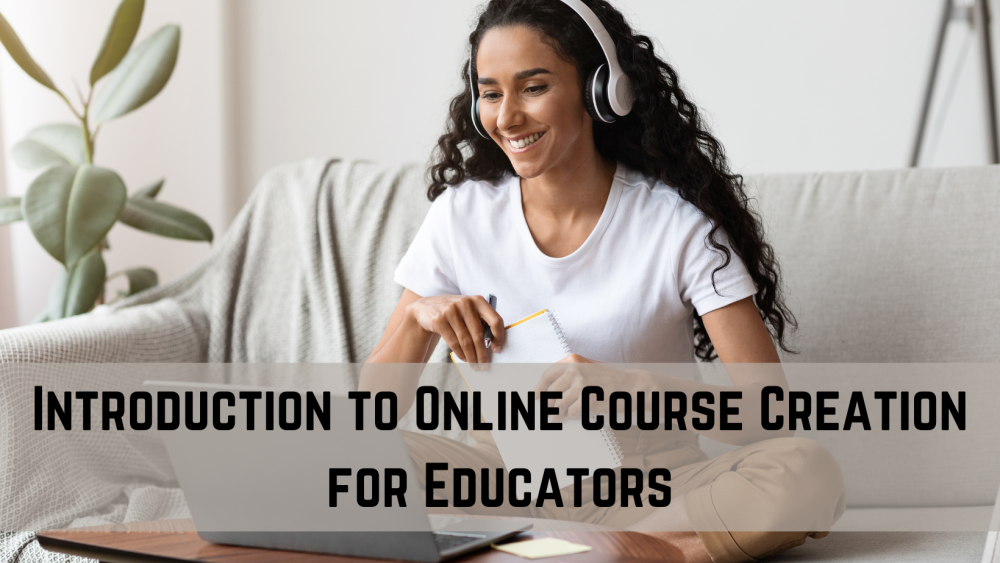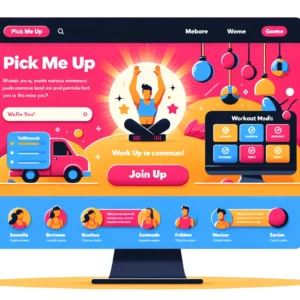Imagine a classroom where every student’s educational experience is tailored specifically to their abilities, interests, and learning style. That’s the essence of personalized lesson planning. I’m here to walk you through this transformative approach to education, which customizes learning activities to fit the distinct needs of each student.
Why is this important? Because personalized lesson plans aren’t just about catering to preferences; they’re about harnessing the power of adaptability to maximize a student’s potential for growth and success. By considering the unique learning style of an individual, educators can create a more engaging and effective educational experience.
At the heart of this educational philosophy is a simple, yet profound understanding: every student has a preferred way to receive and process information. Imagine being left-handed in a world that exclusively caters to right-handed individuals—it’s inconvenient and frustrating. The same holds true for learning. I believe that understanding and addressing each student’s needs isn’t just beneficial, it’s a responsibility one carries to ensure the path of learning is as clear and accessible as possible.

Identifying Individual Learning Styles
You know each student is unique, but how does that inform the way you teach? Individual learning styles play a critical role in figuring this out. It’s about understanding whether a student absorbs information best through hearing, seeing, or touching. These are often grouped as auditory, visual, and kinesthetic learning preferences.
To assess a student’s learning style, I advocate for a mixed-method approach. Start with observations during class activities. Notice if a student prefers listening to explanations, looking at diagrams, or engaging in hands-on activities. You can also use quizzes and questionnaires designed to reveal learning preferences. Plus, having open conversations with students about how they like to learn can provide valuable insights.
Once you’ve nailed down the learning styles, adaptability is key. For auditory learners, incorporate podcasts or discuss concepts out loud. Visual learners benefit from charts and videos. For those kinesthetic learners, integrate physical activities and models they can manipulate. The goal is to turn this understanding into a road map that informs each customized lesson. It’s not about overhauling your methods—it’s about making smart, responsive tweaks.
The Role of Technology in Customized Education
When it comes to education in the 21st century, technology is not just an add-on; it’s central to crafting personalized lesson plans that resonate with each student. The rise of edtech, or educational technology, offers a plethora of tools to help tailor lessons to individual learning needs. In this section, I will explore how technology can enhance personalized learning experiences and introduce examples of tools that are making real differences in how instruction is delivered.
Educational technology provides a flexible platform for students to learn at their own pace. Whether it’s through adaptive learning algorithms that adjust difficulty based on performance, or platforms that offer a wide variety of ways to consume information—such as videos, interactive simulations, or quizzes—there are tools out there designed to cater to all types of learners. I will delve into how these platforms work and how they can be integrated into personalized lesson plans.
With that said, it’s important to remember that technology should support, not replace, the personal connection between teacher and student. The best learning outcomes often come from a blend of tech-based and human-centric approaches. As I suggest tech tools that can help augment lesson plans, I’ll also touch on strategies to ensure that the human element remains a pivotal part of the learning process.

Creating a Personal Connection with Students
I’ve found that the heart of an effective educational experience often lies in the connection I establish with my students. Let me share why this connection is so crucial for personalized lesson planning. It’s more than just understanding who your students are; it’s about building a foundation of trust that encourages them to engage fully in their learning journey.
Certain strategies stand out when it comes to forming these meaningful relationships. These include showing genuine interest in students’ lives, being consistently available to offer support, and actively listening to their concerns. It doesn’t end with simple conversations; it’s about validating their feelings, celebrating their triumphs, and guiding them through challenges.
The result of this rapport isn’t just feel-good moments; it directly influences their engagement and success. When students feel heard and valued, they’re more likely to take risks, ask questions, and stretch their boundaries. In personalized lesson planning, this translates to tailored content that resonates on a deeper level, fostering an environment where students are eager to learn and grow.
Designing Personalized Lesson Plans: A Step-by-Step Guide
The bedrock of meaningful instruction lies in lesson plans that speak directly to a student’s strengths and interests. To create a plan that’s as unique as each student, I start by clearly understanding the educational goals and aligning them with curriculum standards. This ensures that, while the delivery is personalized, the core learning objectives remain consistent and significant.
Next, I dig into the heart of personalization by weaving student interests and strengths into the lesson structure. By doing that, I not only keep the student invested but also make learning more relevant and enjoyable for them. This could involve using sports statistics to teach math concepts to an athlete or exploring chemical reactions through cooking for a student passionate about culinary arts.
Adaptability is my watchword when it comes to implementing personalized lesson plans. I’m always prepared to gather feedback from students and adjust the lessons accordingly. This dynamic approach allows me to fine-tune teaching methods and content delivery to achieve the best possible educational outcomes.

The Challenges and Solutions in Personalized Planning
While personalized lesson planning is incredibly effective, it’s not without its hurdles. You, as an educator, might encounter various obstacles ranging from limited time to insufficient resources. Understanding these challenges is the first step toward effective mitigation.
One common challenge is the significant time investment required to create individualized plans. Juggling this with other teacher responsibilities can be daunting. To tackle this, improve your time management skills. Allocate specific blocks of time to lesson planning, and use templates for similar learning activities to streamline the process.
Access to a variety of educational materials is another obstacle. Not every school or educator has a budget that allows for an extensive range of resources. To overcome this, tap into free online resources, collaborate with other educators to share materials, and encourage students to seek out and suggest resources they feel are engaging.
Differentiation to meet each student’s educational needs sometimes leads to complexity that can overwhelm both the teacher and the student. Simplify by focusing on essential learning objectives and scaling complexity only as needed. Remember to start with the basics and incrementally introduce more challenging material.
In my experience, the key is to remain adaptable. Regularly collect feedback from your students to ensure that the plan is working for them. Willingness to modify your approach based on that feedback is essential for the success of personalized lesson planning.
Engaging Parents and Guardians in the Process
As an educator, I know that involving parents and guardians is vital in a child’s educational journey. It’s a three-way partnership between the student, the educator, and the family. When I develop personalized lesson plans, my goal includes ensuring that parents are not just informed but also actively engaged.
Good communication is the bedrock of this engagement. I provide regular updates using clear, jargon-free language. Whether it’s through email, conferences, or a digital platform, keeping parents in the loop about their child’s progress and how the lessons are tailored makes a significant difference. It fosters a supportive environment for the student to thrive.
Parental involvement can range from helping with homework to discussing progress with their child. Even simple actions like reading together or exploring a topic of interest can reinforce the lessons learned at school. I encourage this by providing parents with suggestions and resources pertinent to the customized lessons.
Lastly, gaining insights from parents is invaluable. They offer a unique perspective on their child’s interests and areas where they may struggle, which can refine the lesson plans further. It’s a collaborative effort that benefits the student immensely, helping them receive the support they need not just in school, but also at home.

Monitoring and Assessing Student Progress
Effectively monitoring and assessing the academic progress of students is crucial when providing personalized lesson planning services. To guarantee that each student reaps the full benefits of customized learning, I utilize an array of tools designed to track and measure academic growth. It’s important to remember that the aim here isn’t only to chart progress but also to identify areas where the lesson plan can be further tailored to the student’s needs.
The use of digital portfolios and learning management systems allows me to collect data on student performance in real time. This not only provides insights into their achievements but also shines a light on the aspects of the subject matter they find challenging. Such tools enable both educators and students to visualize progress through dashboards and customized reports.
Interpreting this data is the next critical step. I ensure to look beyond the numbers to understand the context behind them. This might involve reviewing the types of errors in a student’s work, their participation levels, or even their behavioral changes during different activities. By doing so, I can fine-tune lesson plans to enhance learning outcomes and address any barriers they face.
Continuous assessment isn’t merely about grading; it’s about fostering an iterative learning process. When students are involved in their own progress monitoring, they become more engaged and take proactive steps towards their own learning. Quizzes, self-assessments, and reflective prompts are valuable tools for encouraging this self-monitoring approach.
My approach doesn’t end with analysis; I also foster open dialogue with students about their progress. This encourages self-awareness in learners and ensures that they feel supported throughout their educational journey. The feedback loop, crucial in personalized learning, involves students as active participants, and it’s in this phase where real, impactful learning happens.
The insights gained from ongoing assessments are pivotal as we head into the final leg of the journey: launching your personalized lesson planning services. The data and student experiences become powerful testimonials showcasing the effectiveness of the tailored approach. They also serve as the cornerstone for refining and scaling your services.
Launching Your Personalized Lesson Planning Services
Building a successful business around personalized lesson planning services begins with a clear vision of what you aim to achieve. It’s about understanding your unique strengths and the specific needs of your target market.
Develop your unique selling proposition (USP) by pinpointing what sets your service apart from others. Perhaps your expertise in a particular subject matter, or your innovative use of technology, makes your lesson planning stand out.
Effective marketing is key to reaching educators, schools, and parents who can benefit from your services. Consider engaging digital marketing strategies like an SEO-optimized website, educational blog content, and social media outreach to establish a strong online presence.
Foster relationships and build a network with educational professionals. Word of mouth remains a powerful tool, and personal endorsements can significantly bolster your reputation.
Quality service is the backbone of your business, so strive for excellence in every lesson plan you craft. As you gain more clients, use their feedback to refine your services and ensure you’re meeting their needs.
As your business grows, consider scaling up. This might mean hiring additional educators, expanding into new subject areas, or offering workshops on personalized lesson planning for teachers.
Remember, success doesn’t happen instantaneously. Be prepared to adapt and evolve over time. With persistence, dedication, and a commitment to providing value, your service will not only garnish positive results but also contribute meaningfully to the educational landscape.







 The idea of earning a sizable income while you sleep used to seem like a far-fetched pipe dream reserved only for the ultra-rich. However, the digital age has gradually and profoundly revolutionized what is possible in terms of making money passively with minimal ongoing effort. suddenly, nearly anyone with the right expertise, motivation and guidance can establish revenue streams that run profitably on autopilot.
The idea of earning a sizable income while you sleep used to seem like a far-fetched pipe dream reserved only for the ultra-rich. However, the digital age has gradually and profoundly revolutionized what is possible in terms of making money passively with minimal ongoing effort. suddenly, nearly anyone with the right expertise, motivation and guidance can establish revenue streams that run profitably on autopilot.


